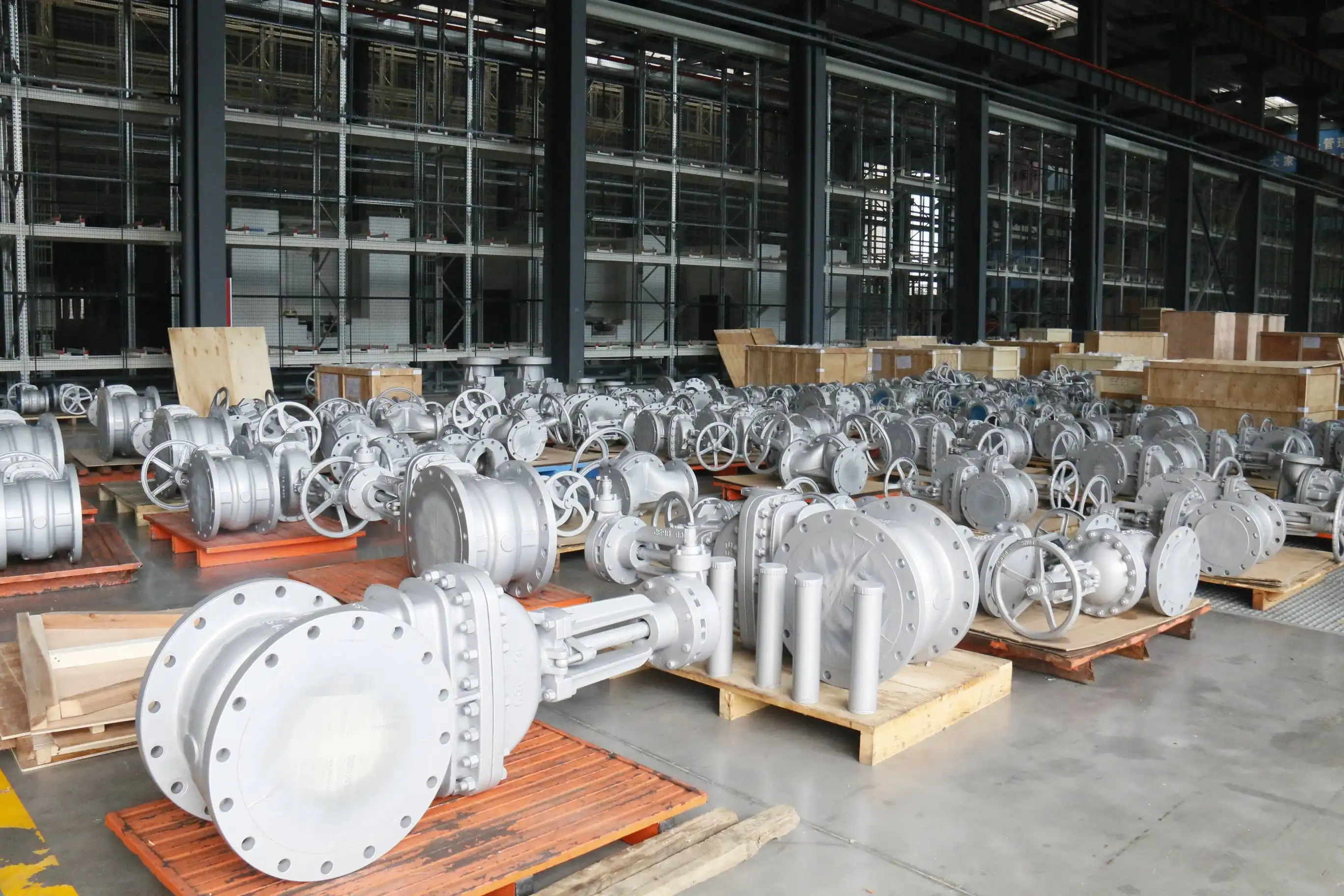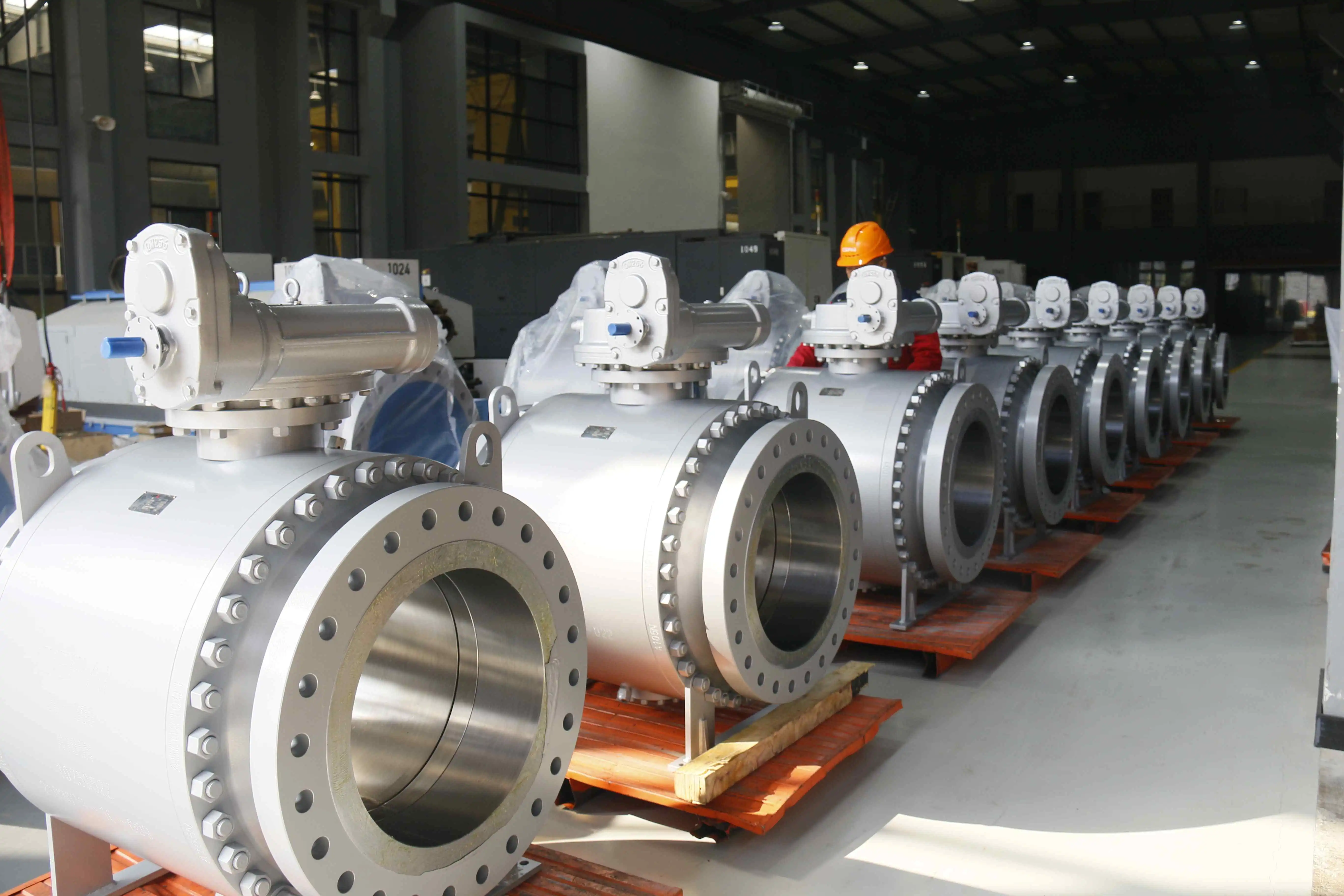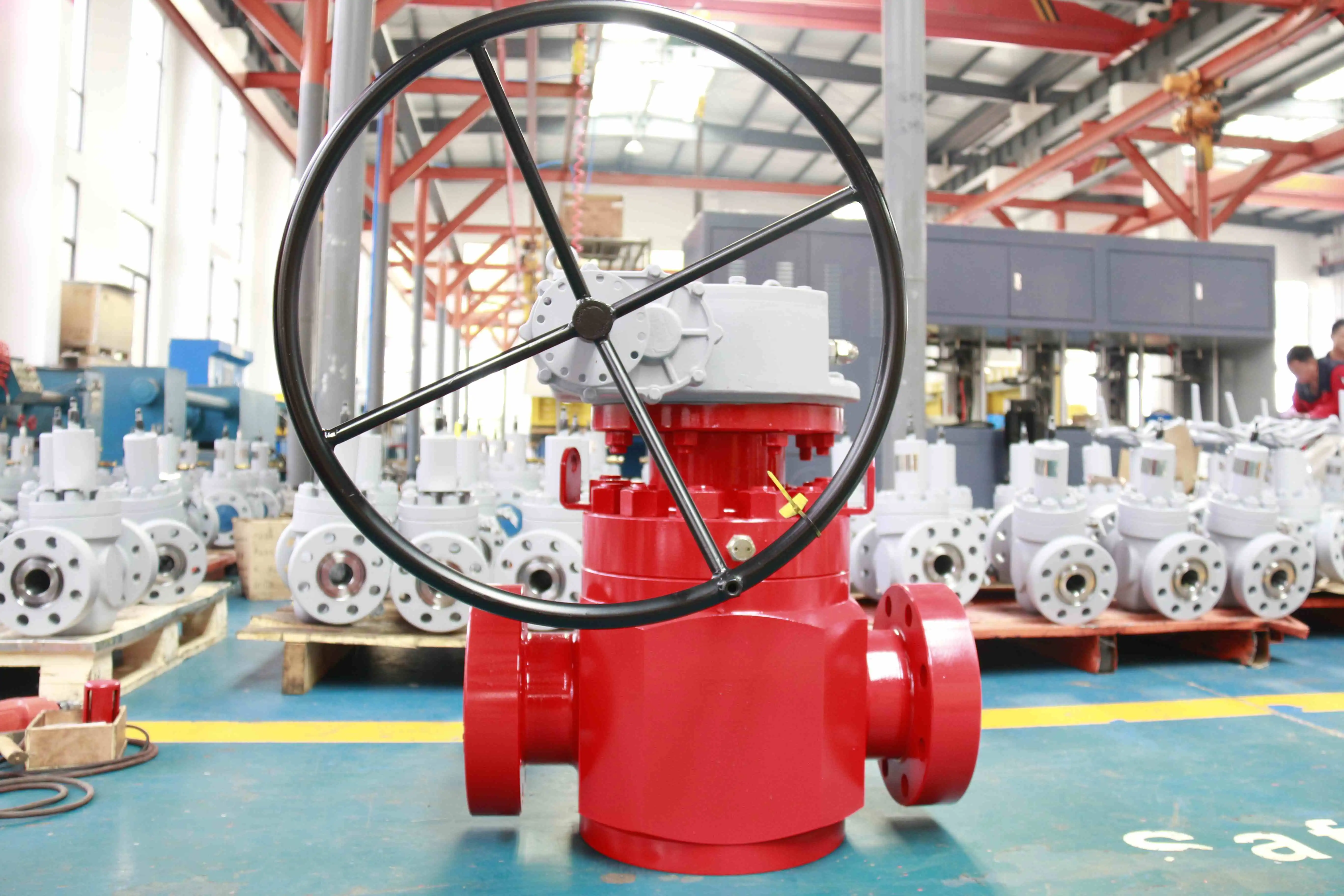How to Choose the Right Pneumatic Ball Valve for Your Project?
Selecting the right pneumatic ball valve for your industrial project requires careful consideration of multiple technical factors and operational requirements. A pneumatic ball valve combines the reliable flow control capabilities of traditional ball valves with the precision and automation benefits of pneumatic actuation systems. These sophisticated valve solutions are essential components in modern industrial applications, particularly in oil and gas operations, petrochemical processing, and power generation facilities. Understanding the critical selection criteria, from pressure ratings and material compatibility to actuator specifications and environmental conditions, ensures optimal performance, safety, and cost-effectiveness throughout the valve's operational lifespan. The proper selection process involves evaluating system parameters, application requirements, and long-term maintenance considerations to achieve reliable, efficient fluid control that meets both immediate project needs and future operational demands.

Key Technical Specifications and Performance Requirements
Pressure and Temperature Ratings
When selecting a pneumatic ball valve for industrial applications, pressure and temperature ratings form the foundation of safe and reliable operation. Operating pressure requirements must account for both normal working conditions and potential system surges, with safety factors typically ranging from 1.5 to 4 times the maximum expected pressure. The valve selection should be based on the specific pressure requirements of the system, ensuring compatibility with downstream and upstream components. Temperature considerations encompass not only the process fluid temperature but also ambient conditions that may affect actuator performance and seal integrity. High-pressure applications in oil and gas operations often require pneumatic ball valves rated for pressures exceeding 1,500 PSI, with specialized designs capable of handling up to 15,000 PSI in wellhead applications. Temperature ranges typically span from cryogenic conditions as low as -196°C for liquefied natural gas applications to high-temperature environments reaching 538°C in thermal power plants. Material selection becomes critical at temperature extremes, with stainless steel bodies, PTFE seals for moderate temperatures, and metal-seated designs for extreme conditions. The pneumatic actuator components must also maintain functionality across the specified temperature range, requiring consideration of air supply moisture content and potential freezing in cold environments.
Flow Characteristics and Sizing Considerations
Proper sizing of pneumatic ball valves directly impacts system efficiency, pressure drop, and overall performance characteristics. Matching the valve size to the pipe diameter ensures compatibility and prevents flow restrictions, while flow coefficient (Cv) calculations determine the valve's capacity to handle required flow rates without excessive pressure loss. Full-bore pneumatic ball valves provide minimal pressure drop and maximum flow capacity, making them ideal for mainline applications where flow restriction must be minimized. Reduced-bore designs offer cost advantages and improved control characteristics in applications where slight flow restriction is acceptable. The relationship between valve size and flow capacity follows established engineering principles, with larger valves providing exponentially greater flow capacity but requiring correspondingly larger and more expensive actuators. Velocity considerations become particularly important in erosive service applications, where high fluid velocities can cause premature wear of valve components. Pneumatic ball valve sizing must also account for future system modifications and potential capacity increases, providing flexibility for operational changes without requiring complete valve replacement.
Material Compatibility and Chemical Resistance
Material selection for pneumatic ball valves requires comprehensive analysis of process fluid characteristics, including chemical composition, pH levels, corrosive properties, and potential contamination. Pneumatic valves can be manufactured from materials that are resistant to corrosion, ensuring reliable performance when handling corrosive substances, with stainless steel grades 316 and 316L providing excellent general-purpose corrosion resistance. Specialized applications may require exotic alloys such as Hastelloy, Inconel, or duplex stainless steels for enhanced chemical compatibility. Body materials must resist both internal corrosion from process fluids and external environmental factors including atmospheric corrosion, UV exposure, and industrial pollutants. Seal materials require particular attention, with PTFE offering broad chemical compatibility, while PEEK and metal seals provide solutions for extreme temperature or aggressive chemical environments. The pneumatic actuator components, including cylinders, seals, and air connections, must also demonstrate compatibility with the installation environment, considering factors such as humidity, dust, explosive atmospheres, and potential chemical exposure from process leaks or atmospheric contamination.
Application-Specific Selection Criteria
Oil and Gas Industry Requirements
Ball valves are commonly used as fluid shutoff valves in onshore and offshore oil and gas production facilities, where reliability and rapid response times are critical for both operational efficiency and emergency shutdown scenarios. Upstream applications in wellhead assemblies require pneumatic ball valves capable of handling high-pressure crude oil, natural gas, and produced water containing sand, scale, and corrosive compounds. The harsh environmental conditions, including temperature cycling, vibration from drilling operations, and potential exposure to hydrogen sulfide, demand robust construction and proven reliability records. Christmas Tree Assemblies: Ball valves are essential parts of these assemblies that regulate and track the flow of gas and oil from wells, requiring specialized designs that meet API 6A specifications for wellhead equipment. Midstream pipeline applications focus on isolation and emergency shutdown capabilities, with pneumatic actuation providing rapid closure times essential for pipeline safety systems. Downstream refinery applications involve complex process control requirements, where pneumatic ball valves must handle various hydrocarbon fractions, process chemicals, and utility fluids while maintaining precise flow control and reliable sealing performance throughout extended operating cycles.
Petrochemical Processing Applications
In the petrochemical industry, pneumatic ball valves are preferred for their reliability, quick operation, and ability to provide tight shut-off, making them essential components in chemical processing facilities where safety and environmental protection are paramount. In petrochemical plants, ball valves help manage the flow of chemicals and feedstocks while producing plastics, fertilizers, and other products, requiring specialized designs that accommodate aggressive chemicals, high temperatures, and stringent emission control requirements. Petrochemical applications often involve batch processing operations where rapid valve operation and reliable sealing prevent cross-contamination between product grades. The pneumatic actuation system provides consistent operating torque regardless of valve size, ensuring reliable operation even with viscous process fluids or crystallizing chemicals. Safety instrumented systems in petrochemical facilities rely on pneumatic ball valves for emergency shutdown functions, where fail-safe operation and rapid response times are critical for preventing catastrophic incidents. Material selection becomes particularly challenging in petrochemical service, where valves may encounter multiple process chemicals throughout their operational life, requiring broad chemical compatibility and resistance to stress corrosion cracking.

Power Generation and Utility Applications
Power generation facilities utilize pneumatic ball valves in steam systems, cooling water circuits, fuel gas lines, and chemical injection systems, where reliable operation and minimal maintenance requirements are essential for plant availability. Steam service applications require pneumatic ball valves capable of handling superheated steam up to 565°C, with specialized trim designs that prevent galling and seizure during thermal cycling. Cooling water systems demand corrosion-resistant materials and reliable sealing to prevent cooling water loss and environmental contamination. Combined cycle power plants present unique challenges for pneumatic ball valve selection, including rapid temperature changes during startup and shutdown cycles, varying process chemistry in heat recovery steam generators, and stringent emission control requirements for auxiliary systems. Nuclear power applications require additional considerations including radiation resistance, seismic qualification, and nuclear safety classification, with pneumatic ball valves serving critical functions in reactor cooling systems and emergency core cooling systems. The extended maintenance intervals common in power generation facilities necessitate robust pneumatic actuator designs with proven long-term reliability and predictable maintenance schedules.
Actuator Technology and Control Integration
Pneumatic Actuator Types and Performance Characteristics
The single-acting piston-type pneumatic ... system. Therefore, when selecting a single-acting cylinder, it is necessary to choose whether the pneumatic ball valve is normally open or normally closed, affecting the fail-safe position during air supply interruptions. Single-acting pneumatic actuators utilize spring return mechanisms to provide fail-safe operation, while double-acting designs offer higher torque output and precise positioning capabilities for throttling applications. Rack and pinion actuators provide reliable operation with excellent maintenance access, while piston-type designs offer compact installations and high torque-to-weight ratios. Actuator sizing calculations must consider both breakaway torque for initial valve operation and running torque for continuous operation, with safety factors typically ranging from 1.25 to 2.0 depending on application criticality. Air consumption calculations determine pneumatic supply requirements, affecting overall system operating costs and infrastructure requirements. Modern pneumatic actuators incorporate features such as manual overrides for emergency operation, position indication for operational status, and mounting provisions for additional accessories including solenoid valves, limit switches, and positioners for enhanced control integration.
Control System Integration and Automation
Modern pneumatic ball valve installations require seamless integration with distributed control systems, safety instrumented systems, and plant automation networks. Digital positioners provide precise valve positioning feedback and diagnostic capabilities, enabling predictive maintenance strategies that minimize unplanned downtime. Smart pneumatic actuators offer comprehensive diagnostic data including actuator pressure, valve position, operating cycles, and performance trends that support condition-based maintenance programs. Communication protocols including HART, Foundation Fieldbus, and Profibus enable bi-directional communication between pneumatic ball valve assemblies and control systems, providing real-time operational data and remote configuration capabilities. Safety integrity level requirements for critical applications necessitate pneumatic actuator designs that meet SIL 2 or SIL 3 standards, with proven failure rates and comprehensive safety documentation. Integration considerations include emergency shutdown system compatibility, where pneumatic ball valves must respond to safety system commands within specified time limits while maintaining reliable operation under all plant operating conditions.
Maintenance and Lifecycle Considerations
Pneumatic ball valve maintenance requirements significantly impact total cost of ownership and operational reliability throughout the valve's service life. Actuator design features such as replaceable seals, accessible wear components, and standardized spare parts availability affect maintenance planning and inventory requirements. Environmental protection ratings including IP65 or NEMA 4X classifications ensure reliable operation in harsh industrial environments while minimizing maintenance frequency due to contamination or moisture ingress. Predictive maintenance capabilities enabled by smart pneumatic actuators provide early warning of potential failures, allowing planned maintenance during scheduled outages rather than emergency repairs during critical production periods. Material selection for actuator components affects maintenance intervals, with corrosion-resistant materials extending service life in challenging environments. Training requirements for maintenance personnel vary with actuator complexity, affecting long-term operational costs and personnel development programs. Comprehensive documentation including maintenance manuals, spare parts lists, and troubleshooting guides supports efficient maintenance operations and minimizes downtime during repair activities.
Conclusion
Selecting the optimal pneumatic ball valve requires comprehensive evaluation of technical specifications, application requirements, and long-term operational considerations. The integration of pressure ratings, material compatibility, actuator performance, and control system requirements determines project success and operational reliability. Modern pneumatic ball valve technology offers sophisticated solutions that enhance safety, efficiency, and automation capabilities across diverse industrial applications.

For projects demanding the highest standards of quality and performance, partnering with established manufacturers ensures access to proven technology and comprehensive support services. CEPAI Group Co., Ltd. stands as a leading China Pneumatic Ball Valve factory and China Pneumatic Ball Valve supplier, offering comprehensive solutions backed by advanced manufacturing capabilities and extensive industry certifications. As a trusted China Pneumatic Ball Valve manufacturer providing China Pneumatic Ball Valve wholesale solutions, CEPAI delivers competitive Pneumatic Ball Valve price options without compromising quality standards. Our extensive range of Pneumatic Ball Valve for sale includes customized solutions designed to meet specific project requirements. With over 15 years of manufacturing excellence, state-of-the-art production facilities, and commitment to technological innovation, CEPAI Group provides the expertise and reliability your project demands. Contact our technical specialists at cepai@cepai.com to discuss your pneumatic ball valve requirements and discover how our advanced solutions can optimize your project performance.
References
1. Johnson, M.R. and Anderson, K.L. (2023). "Advanced Pneumatic Actuator Technologies for Critical Process Applications." Journal of Industrial Valve Engineering, 45(3), 123-139.
2. Chen, W.X., Liu, H.M., and Zhang, Y.F. (2024). "Material Selection Criteria for High-Performance Ball Valves in Petrochemical Service." International Conference on Fluid Control Systems, Shanghai, China.
3. Thompson, R.J. (2023). "Safety Integrity Levels and Pneumatic Valve Systems: Design Considerations for Critical Applications." Process Safety and Environmental Protection, 178, 245-258.
4. Rodriguez, C.A., Martinez, P.D., and Brown, S.K. (2024). "Digital Integration of Pneumatic Valve Systems in Smart Manufacturing Environments." Automation and Control Engineering Review, 31(2), 67-84.
_1746598568348.webp)
Get professional pre-sales technical consultation and valve selection services, customized solution services.

About CEPAI


